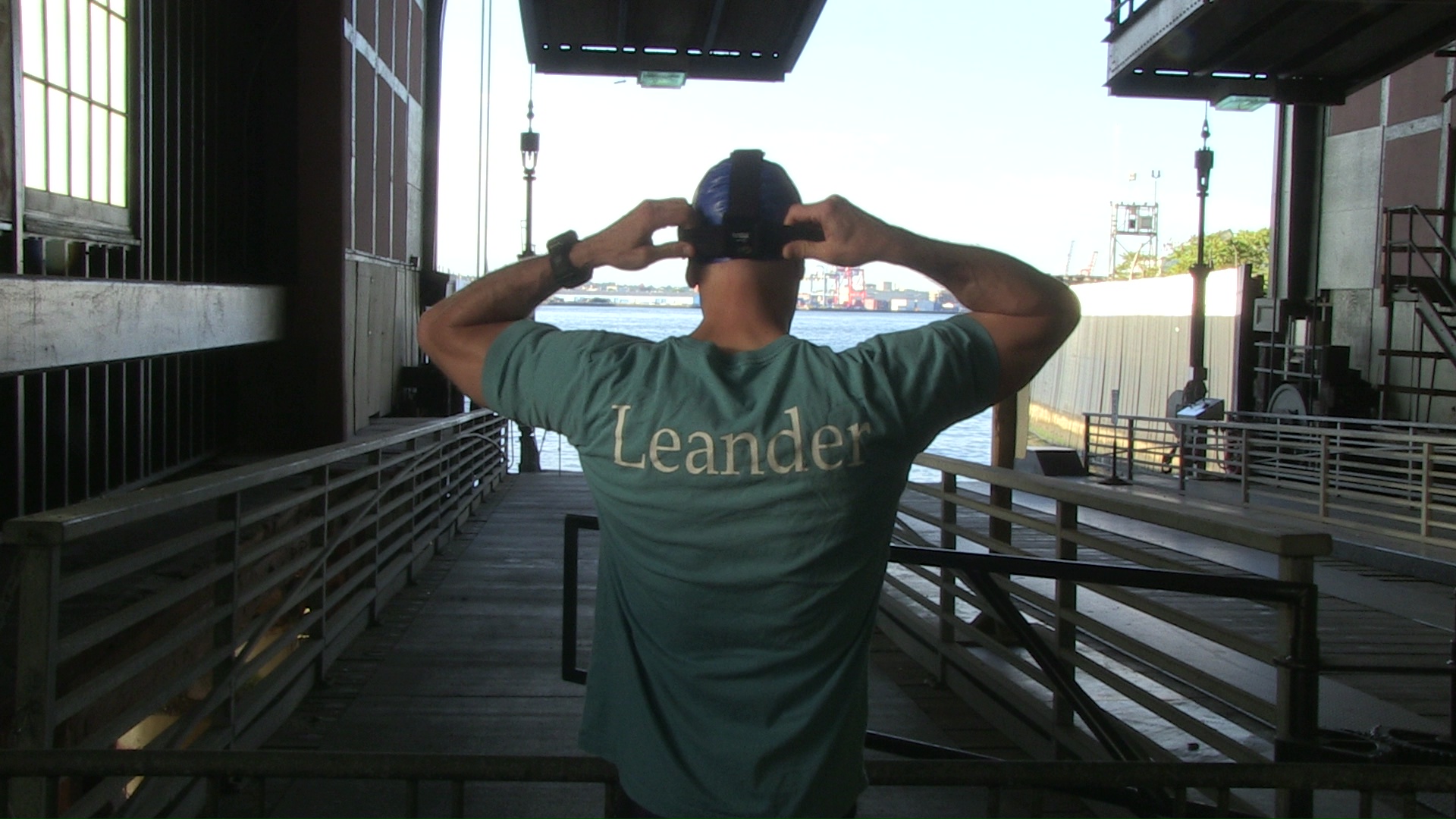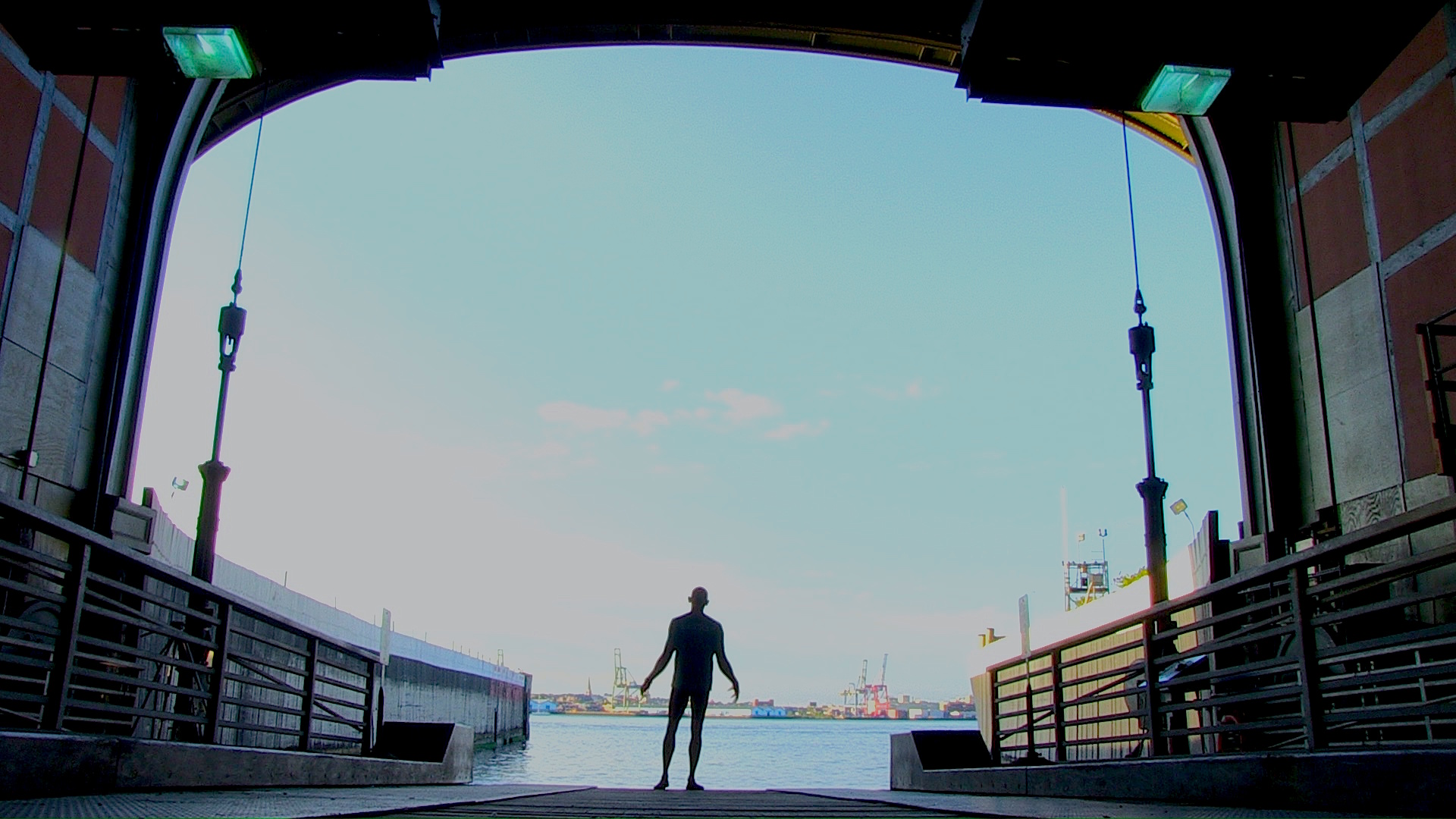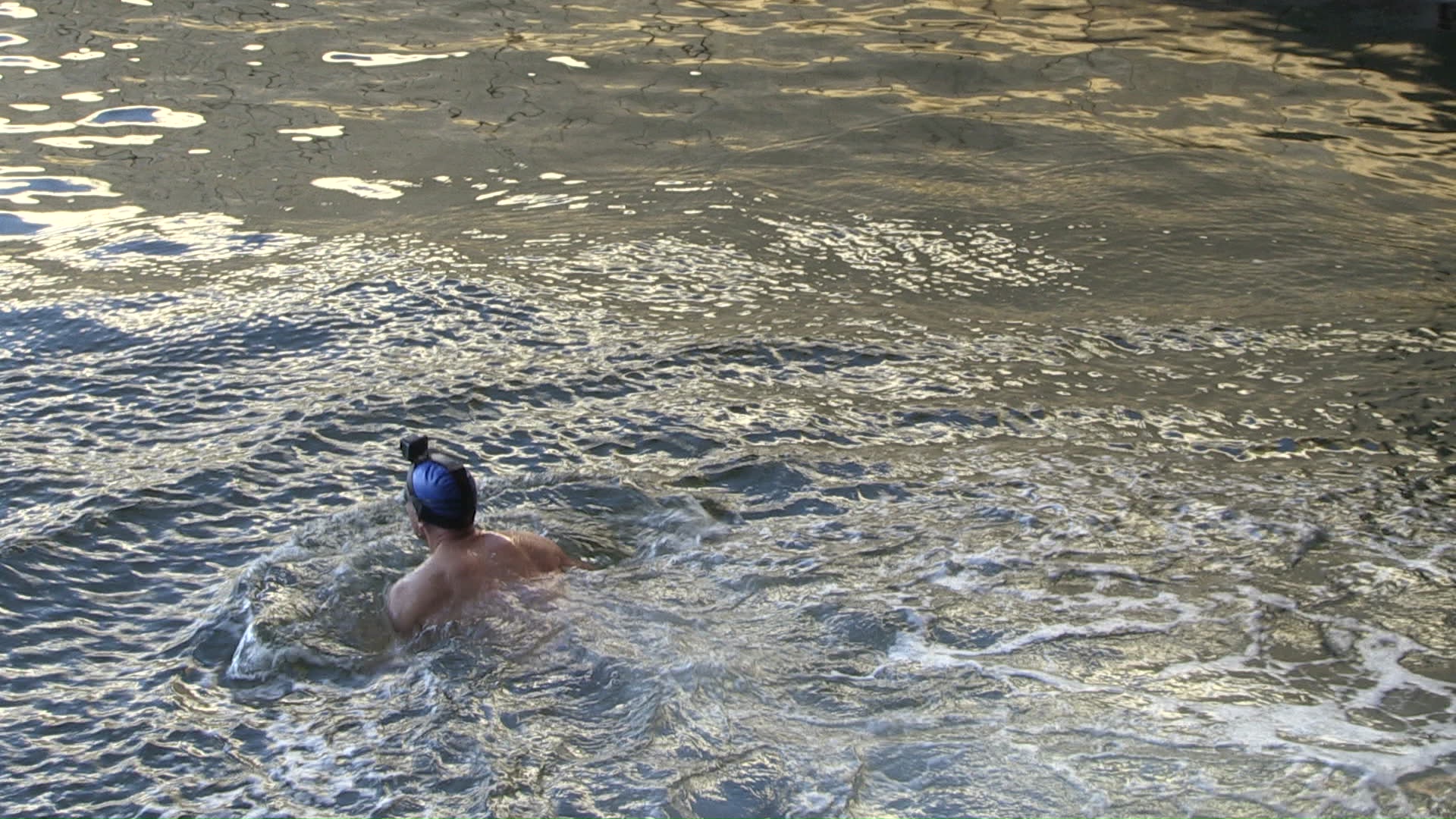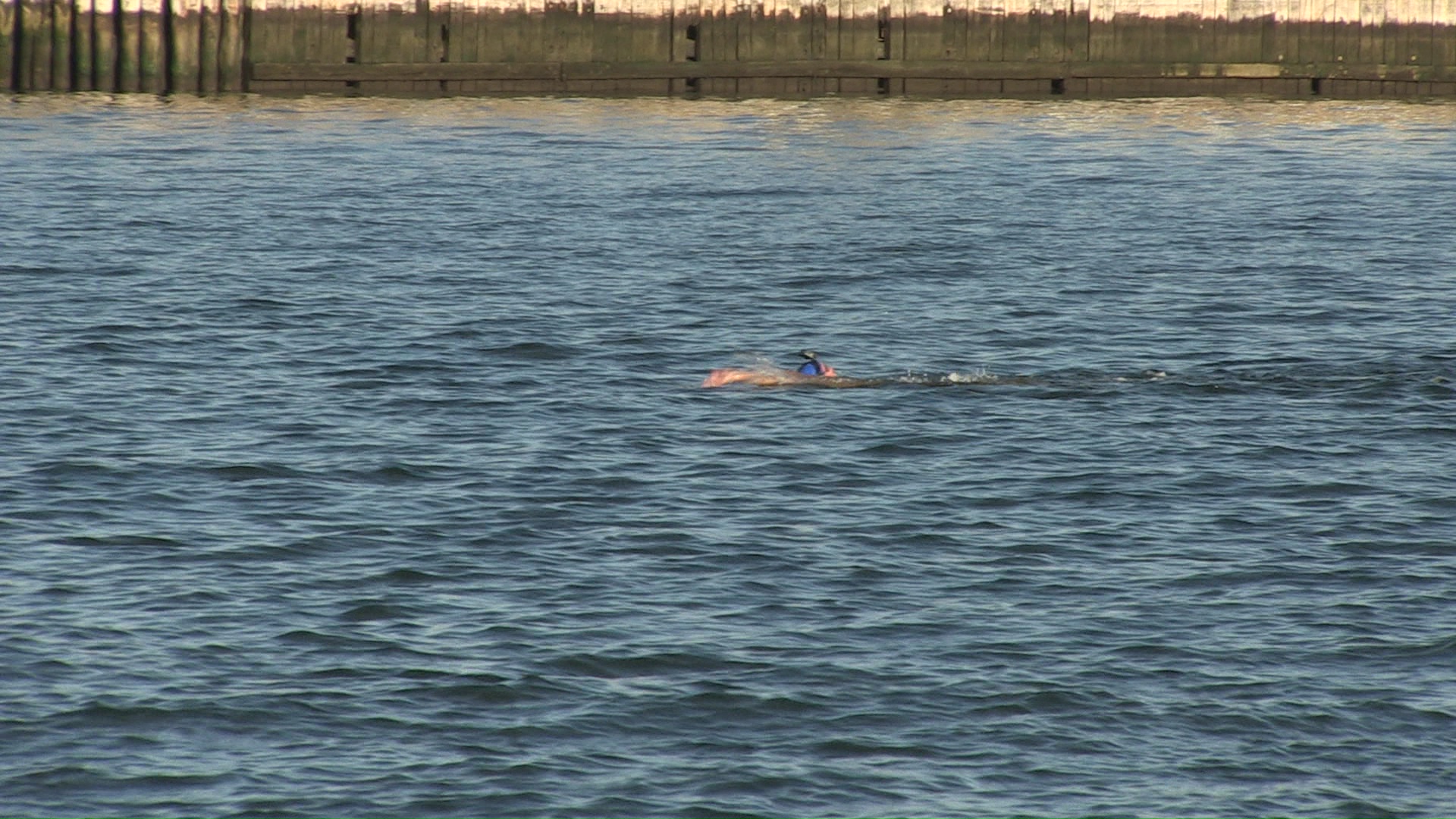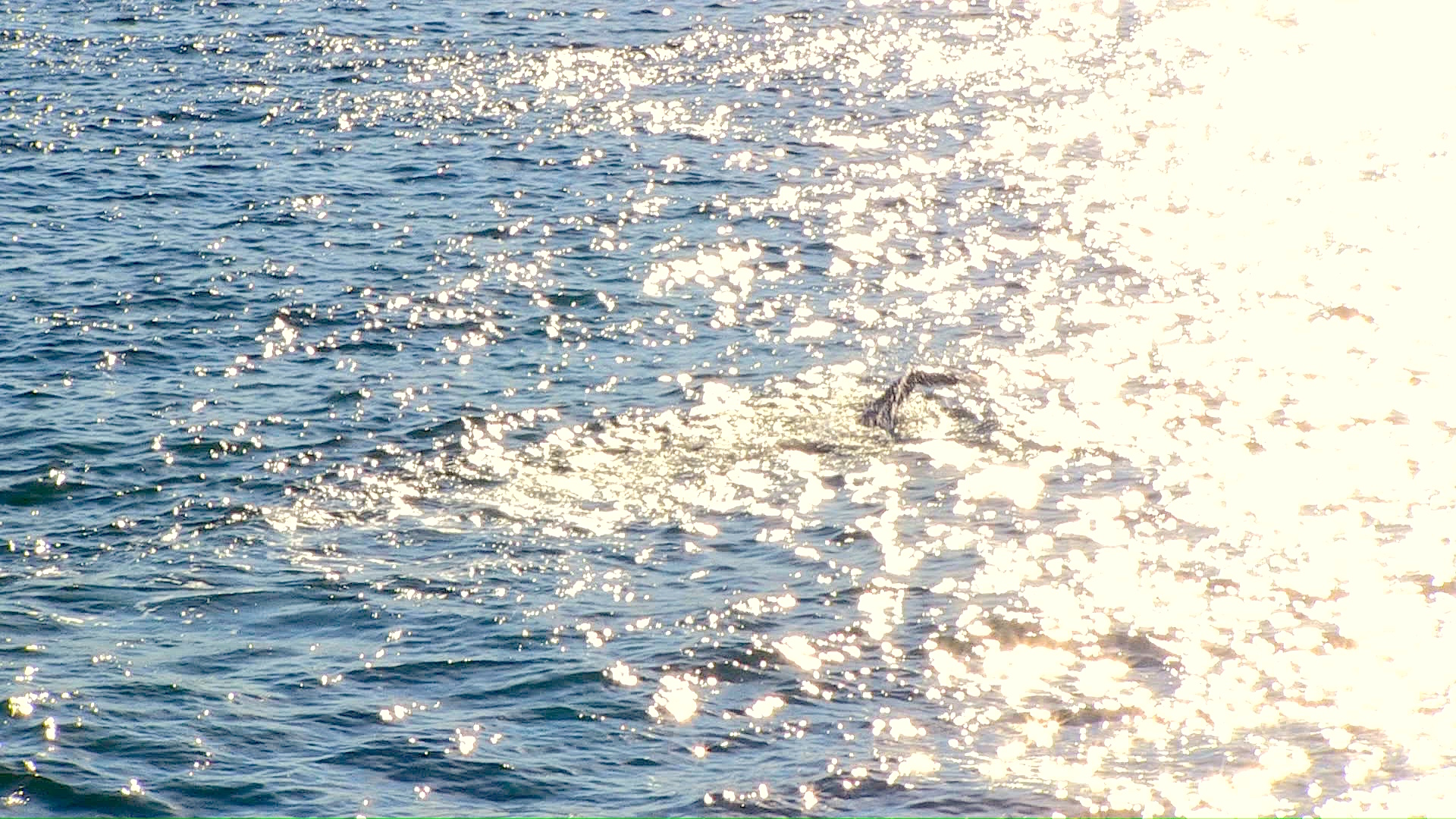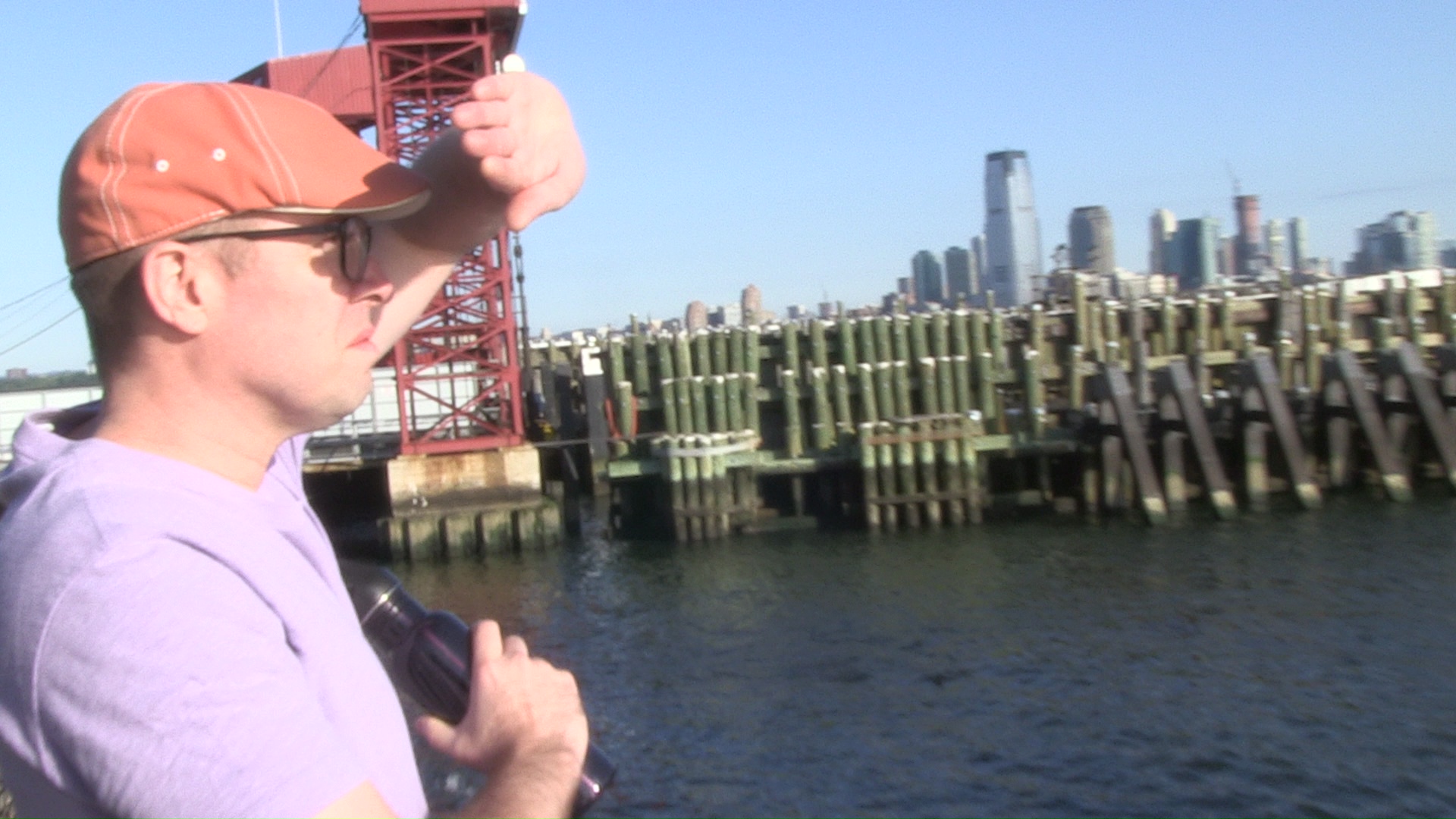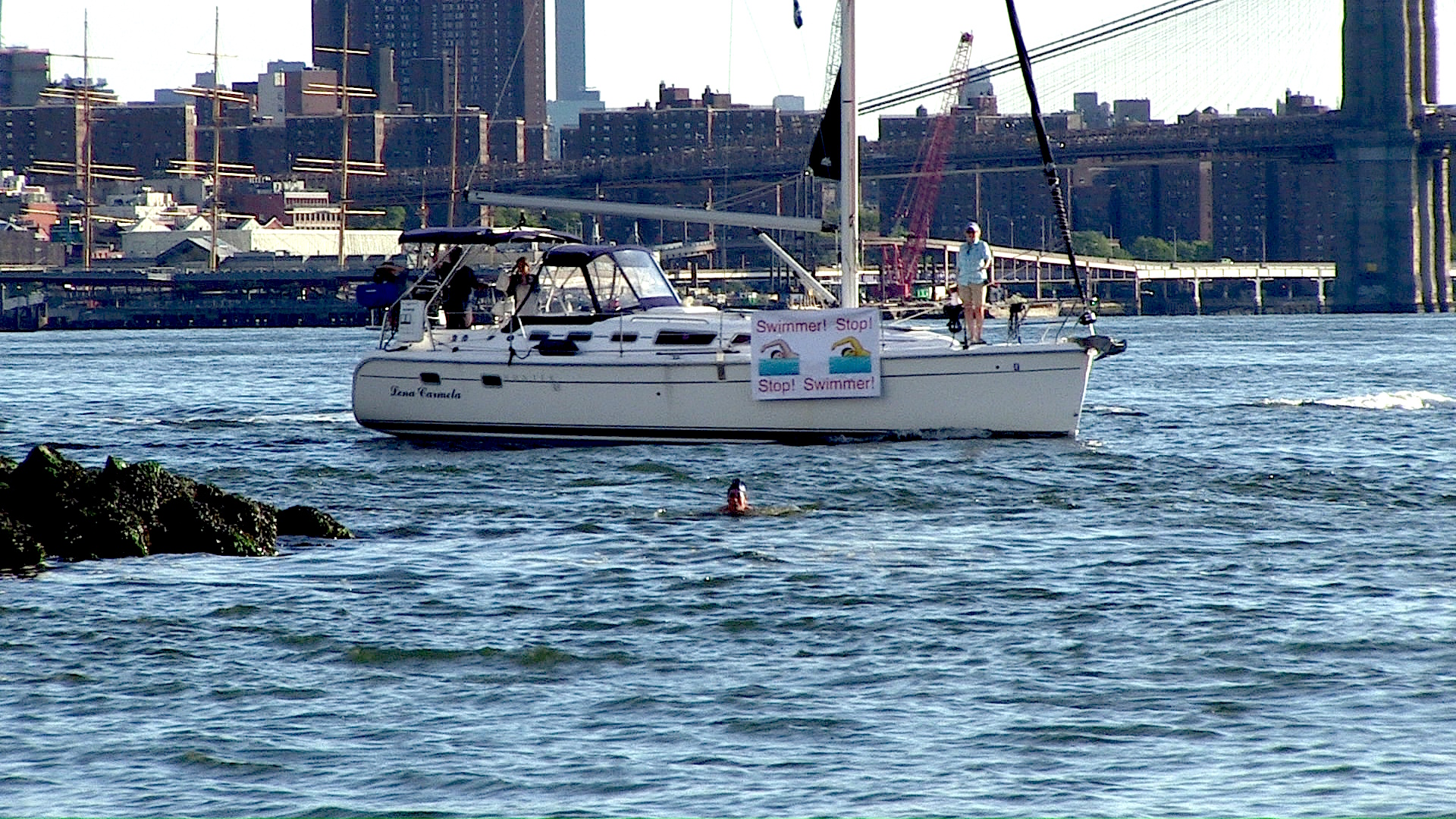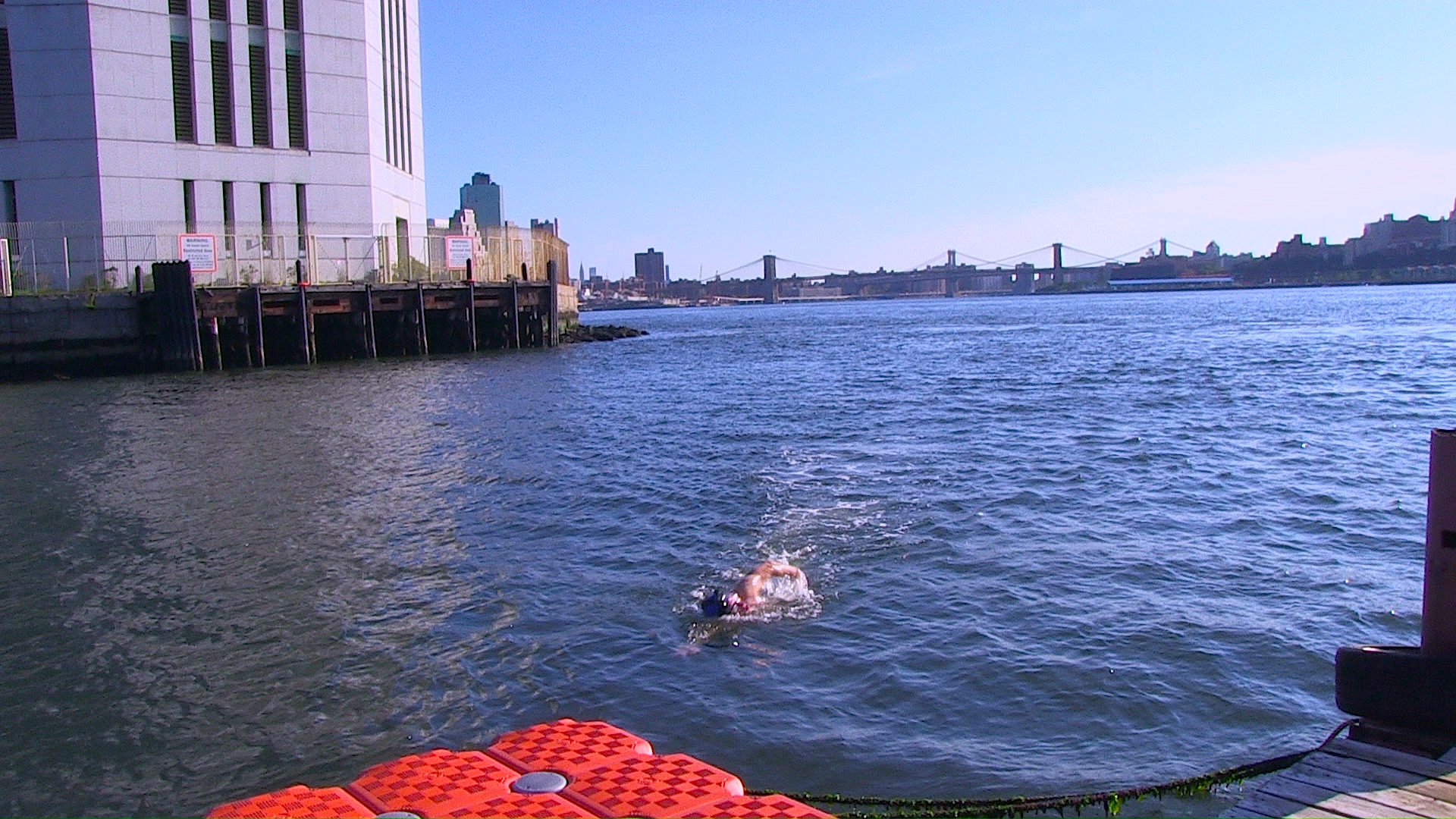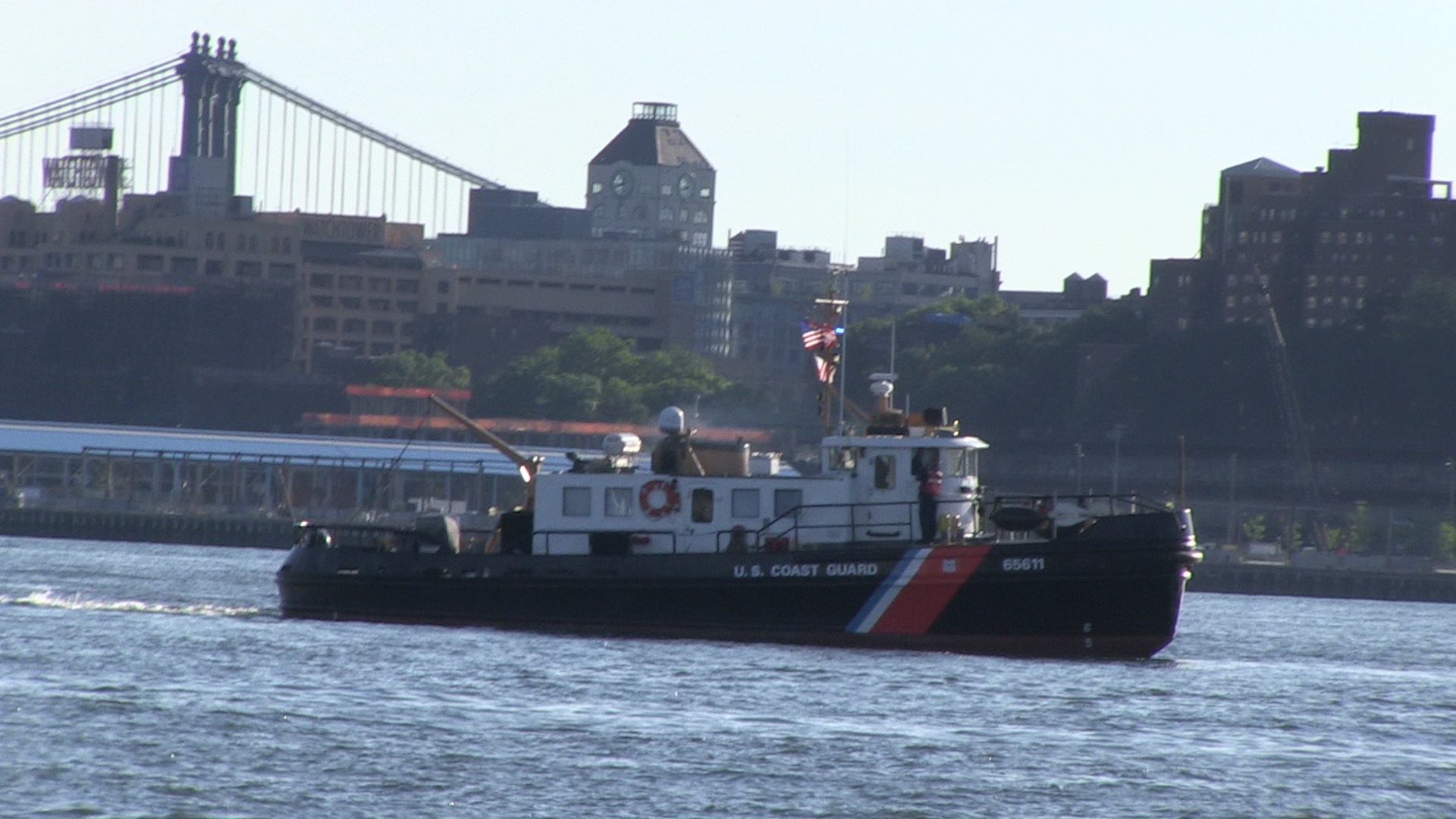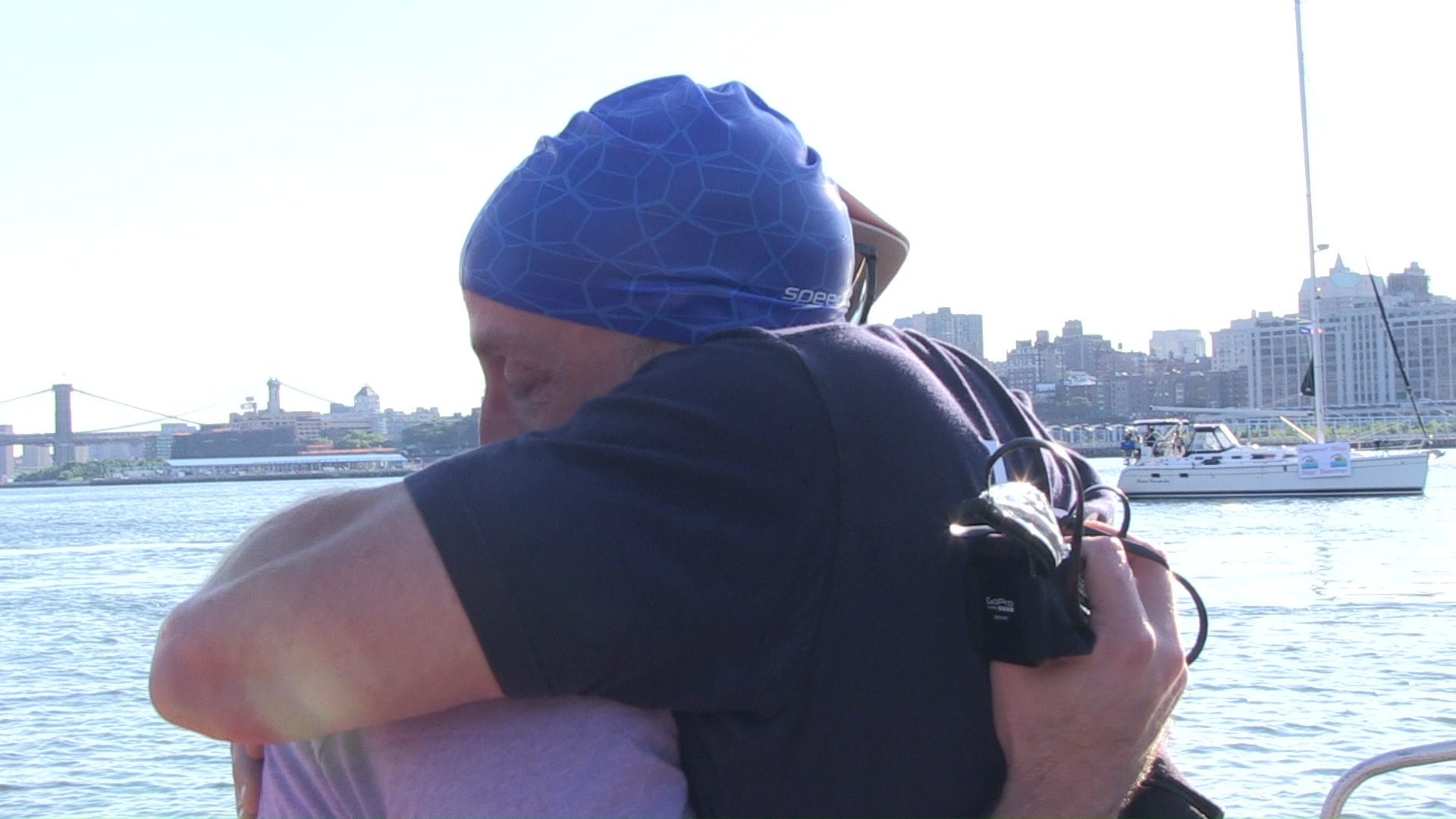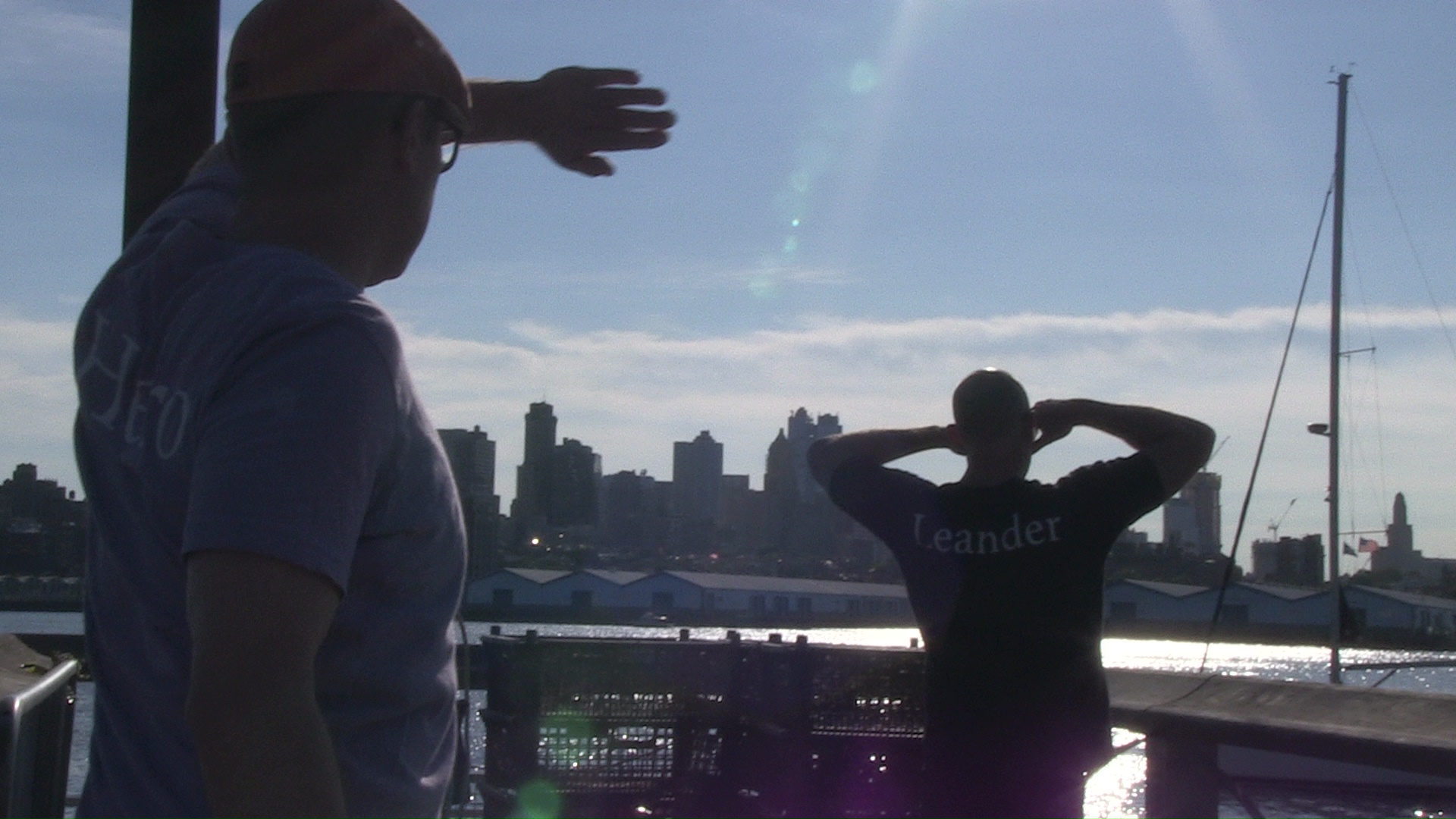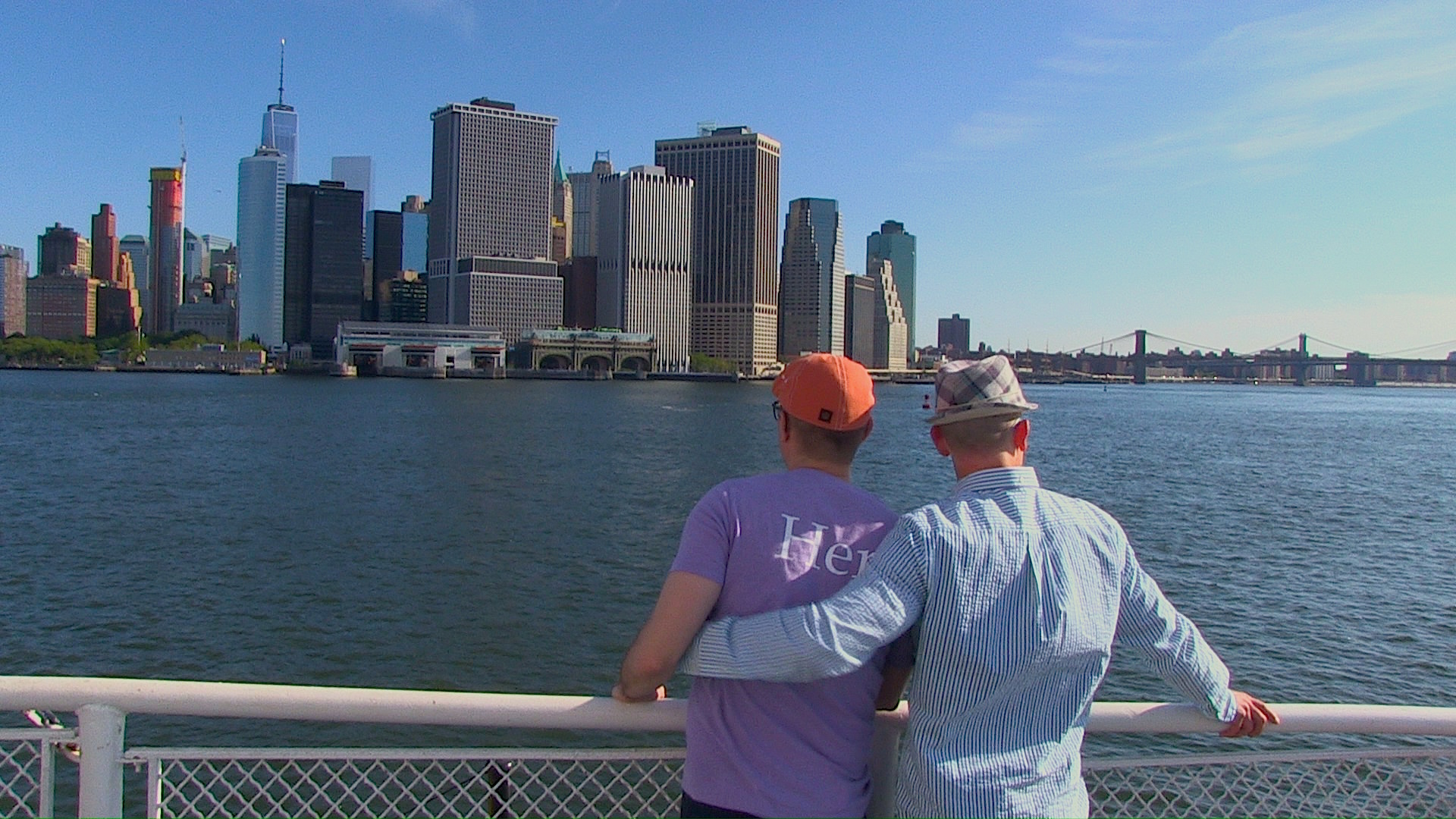Curtain Wall Part 3: Hero and Leander
Screened at LMCC Process Space Studios, 2015; Emily Harvey Foundation, 2015; Hercules Art Studios, 2017; exhibited in Water Works presented by Works on Water and Underwater New York, Governors Island, 2018.
About The Project:
An Immersive Landscape Theater Performance of Christopher Marlowe's Hero and Leander
I swam across New York Harbor to Governors Island on August 22, 2015, in completion of Christopher Marlowe's poem Hero and Leander, left unfinished at the time of his murder in 1593.
Hero and Leander is a drama predicated upon a landscape. Leander falls in love with Hero, a virgin nun of Venus, and swims to her nightly across the Hellespont, a treacherous strait that runs between Asia and Europe in what is now Turkey. Though Leander captures Hero's heart and takes her virginity, he eventually dies while crossing the strait, and, in despair, Hero kills herself by leaping into the water.
The landscape in theater theory, first explored by Gertrude Stein, deemphasized the narrative text and cultivated a decentralized composition in which visual design and other elements might bear equal weight. My swim silences me as a writer. I have reduced Marlowe's text to the action described and three words ("Love, I come").
The swim crosses the lines of visual art performance, theater, and sport. As Richard Schechner theorized, sports such as swimming share with theater and art performance the common elements of spectatorship, rule-based behavior, liveness, improvisation, ritual, contest, and space and time constraints. My project Curtain Wall began as an installation while I was a resident at Lower Manhattan Cultural Council's Workspace (2011-12) and in its next phase was staged in a theater (2014). This iteration is a performed pun on so-called “immersive theater.”
The distinction between sport and theater, between action and the representation of it, runs to the core of the antitheatrical prejudice in Western culture, which Jonas Barish identified. Plato feared theater for its mimetic function, which had the power to seduce, distort the individual, and destroy the republic. Aristotle, on the other hand, embraced theater and the pull of emotion caused by imaginative reenactment. Does action speak for itself? Does the body have a language beyond words? Does it avoid the philosophical defects of mimesis? Does it speak unequivocally?
Apart from Marlowe's poem, the myth has been treated extensively in literature (Ovid, Virgil, Keats, Tennyson, Byron), painting (Rubens, Turner), and music (Victor Herbert). Byron swam the Hellespont in 1810, enacting the myth and catching a cold, which he celebrated in verse.
Although a heterosexual romance, Hero and Leander dwells in homoeroticism. Marlowe luxuriously describes Leander's beauty and lists the many men and gods in love with him. The last part of the poem that Marlowe wrote before his murder swirls around the sea god Poseidon’s infatuation with Leander. Marlowe is believed to have been homosexual or bisexual. Just as others have offered alternative endings, I complete Marlowe's poem by swimming to Governors Island to meet my fiancé, the visual artist Franklin Evans.
Leander's swim is a struggle to survive, a daring act of devotion, like the artist's struggle to find meaning and create. Swimming for me was always about survival: I learned to swim while an infant as rehabilitative therapy following surgery to correct a fatal congenital condition.
Whenever I see water, my gaze is invariably drawn to its transparent, reflective, infinitely changeable, seductive surface. Water surrounds New York and is still alien to the city. Estuaries like New York Harbor are enormously important as the sites of civilization and as ecologically crucial, productive areas for the natural world. The exchange of salt and fresh water generally characteristic of an estuary creates a rich biologically diverse environment. I think of water as a beautiful, benevolent companion, though the rising oceans and violent storms brought by climate change suggest that Poseidon, our would-be lover, does not tolerate indifference well.
Water drives New York's history as a port and point of immigration, as the Statue of Liberty demonstrates. Coastal waters and rivers along national boundaries are today sites of desperation, as immigrants risk death, swimming to foreign shores, to escape violence, abuse, discrimination, political oppression, misogyny, intolerance of sexual minorities, war, and poverty. While defamation of immigrants dismayingly attracts support for demagogues in the United States, I look to the Statue of Liberty in New York Harbor, a monument to the American ethic of offering sanctuary.
Swimming can be a rare form of communion. Edmund in Eugene O'Neill's epic play Long Day's Journey into Night describes this feeling: "Dreaming, not keeping lookout, feeling alone, and above, and apart . . . . Then the moment of ecstatic freedom. . . . The peace, the end of the quest, the last harbor, the joy of belonging . . . . And several times in my life, when I was swimming far out, or lying alone on a beach, I have had the same experience. Became the sun, the hot sand, green seaweed anchored to a rock, swaying in the tide. Like a saint's vision of beatitude."
I am extremely grateful to the many people and entities who have supported me in this performance: MST1 Daniel Vazquez, MEP, CP, MST1 R.J. Sampert, and W. M. Grossman, Chief, Waterways Management Division, of the United States Coast Guard; Leslie Koch, Elizabeth Rapuano, and Marni Friedlander of The Trust for Governors Island; Melissa Levin, Bora Kim, Arzoo Hansen and Laura Nicoll of Lower Manhattan Cultural Council (LMCC); Jeffrey Chetirko and Mike Abegg of New York Harbor School and New York City Department of Education; Kevin Trainor; Clifford Clark and Lee Vestal of HMS Ferries; Barry and Greta Messinger; Peter Hochschild; Melissa Friedling; Margaret Cohen; Patricia Thornley, and Franklin Evans. I am currently a participant in LMCC’s Process Space Program on Governors Island and developed this project as part of my LMCC Process Space residency.
-- Paul David Young, August 20, 2015
Screened at LMCC Process Space Studios in 2015; Emily Harvey Foundation in 2015; Hercules Art Studios in 2017, and as part of Water Works presented by Works on Water and Underwater New York, Governors Island, 2018 https://www.worksonwater.org/events
